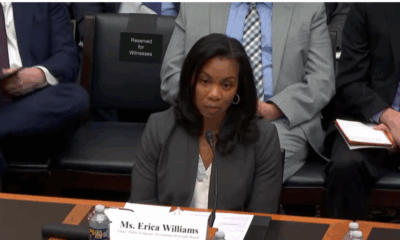A man shops at a Target store in Chicago on November 26, 2024.
Kamil Krzaczynski | AFP | Getty Images
A key economic report coming Wednesday is expected to show that progress has stalled in bringing down the inflation rate, though not so much that the Federal Reserve won’t lower interest rates next week.
The consumer price index, a broad measure of goods and services costs across the U.S. economy, is expected to show a 2.7% 12-month inflation rate for November, which would mark a 0.1 percentage point acceleration from the previous month, according to the Dow Jones consensus.
Excluding food and energy, so-called core inflation is forecast at 3.3%, or unchanged from October. Both measures are projected to show 0.3% monthly increases.
With the Fed targeting annual inflation at 2%, the report will provide more evidence that the high cost of living remains very much a fact of life for U.S. households.
“Looking at these measures, there’s nothing in there that says the inflation dragon has been slain,” said Dan North, senior economist at Allianz Trade Americas. “Inflation is still here, and it doesn’t show any convincing moves towards 2%.”
Along with the read Wednesday on consumer prices, the Bureau of Labor Statistics on Thursday will release its producer price index, a gauge of wholesale prices that is projected to show a 0.2% monthly gain.
Halting progress, but more cuts
To be sure, inflation has moved down considerably from its CPI cycle peak around 9% in June 2022. However, the cumulative impact of price increases has been a burden to consumers, particularly those at the lower end of the wage scale. Core CPI has been drifting higher since July after showing a steady series of declines.
Still, traders in futures market are placing huge odds that policymakers again will cut their benchmark short-term borrowing rate by a quarter percentage point when the Federal Open Market Committee concludes its meeting Dec. 18. Odds of a cut were near 88% Tuesday morning, according to the CME Group’s FedWatch measure.
“When the market is locked in like where it is today, the Fed doesn’t want to make a big surprise,” North said. “So unless something has skyrocketed that we haven’t foreseen, I’m pretty sure the Fed is on a lock here.”
The CPI increase for November likely came from a few key areas, according to Goldman Sachs.
Car prices are expected to show a 2% monthly increase, while air fares are seen as 1% higher, the firm’s economists projected in a note. In addition, the nettlesome increase in auto insurance is likely to continue, rising 0.5% in November after posting a 14% increase over the past year, Goldman estimated.
More trouble ahead
While the firm sees “further disinflation in the pipeline over the next year” from easing in the autos and housing rental categories, as well as softening in the labor markets, it also worries that President-elect Donald Trump’s planned tariffs could keep inflation elevated in 2025.
Goldman projects core CPI inflation to soften, but just to 2.7% next year, while the Fed’s target inflation gauge, the personal consumption expenditures price index, will move to 2.4% on the core reading from its most recent 2.8% level.
With inflation projected to run well above 2% and macro economic growth still running near 3%, this wouldn’t normally be an environment in which the Fed would be cutting. The Fed uses higher interest rates to curb demand which theoretically would force businesses to lower prices.
Markets expect to skip the January meeting then possibly cut again in March. From there, market pricing is for only one or at most two cuts through the rest of 2025.
“Two percent to me doesn’t mean just touching 2% and bouncing along. It means hitting 2% for a continuous, foreseeable future, and none of that is evident in any of those reports,” North said. “You don’t really want to cut in that environment.”

 Accounting1 week ago
Accounting1 week ago
 Personal Finance1 week ago
Personal Finance1 week ago
 Accounting1 week ago
Accounting1 week ago
 Finance1 week ago
Finance1 week ago
 Economics1 week ago
Economics1 week ago
 Economics1 week ago
Economics1 week ago
 Personal Finance1 week ago
Personal Finance1 week ago
 Personal Finance1 week ago
Personal Finance1 week ago






















